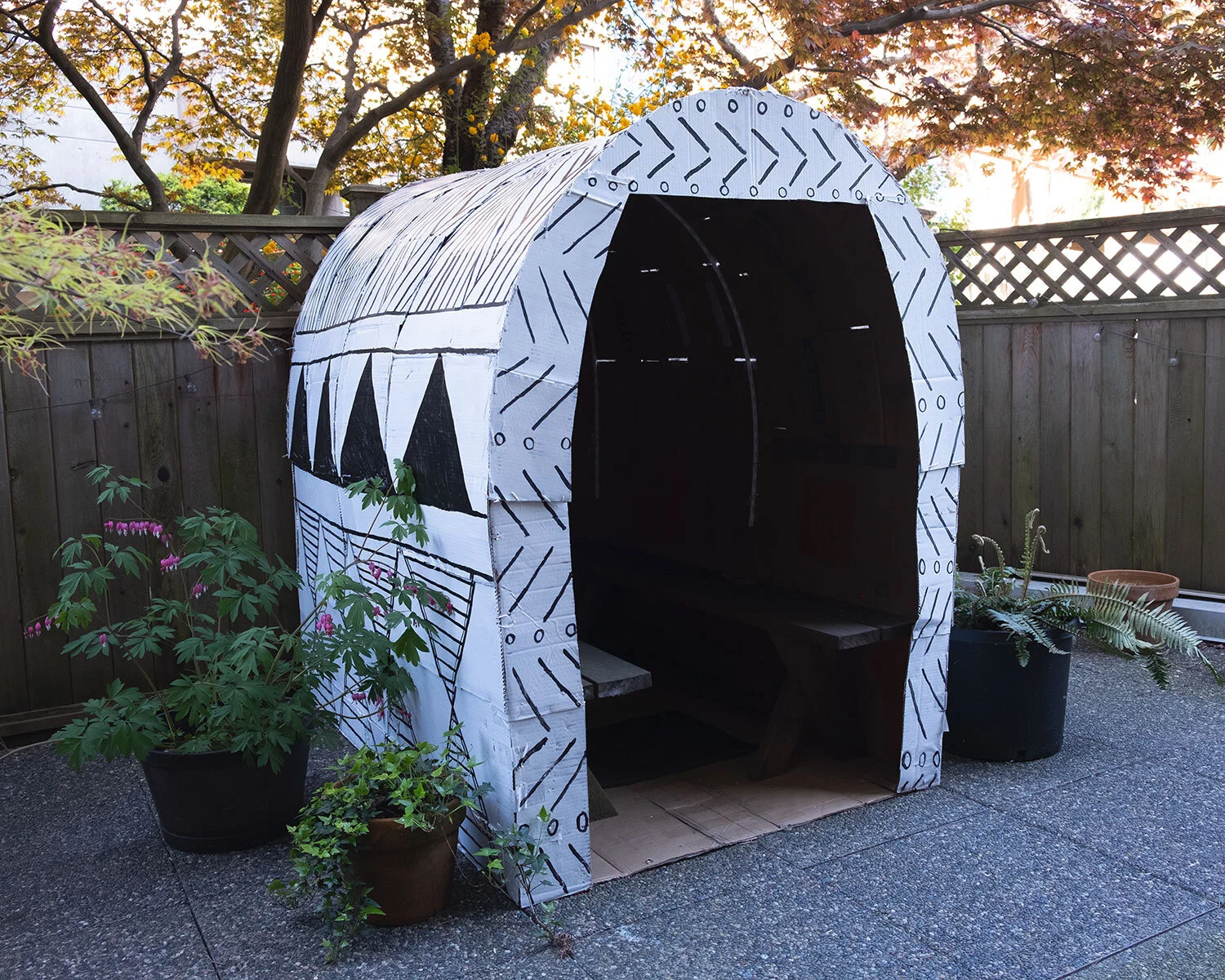Anderson Shelter, 1942 / 2020
Anderson Shelter began as a direct response to the COVID-19 experience of “shelter in place”. I wanted to create a project I could engage my family in, particularly my 8 yr. old son who was not at school during that time. The shelter is a kind of play on words that turns the more holistic idea of shelter in place into a literal shelter that could buffer us from the tedium of pandemic.
As I was planning the project, I remembered my mother’s experience with the air raid shelter during WWII in Britain. I reached out to her surviving siblings, my aunt Avril and uncle Trevor, and asked them to recount their childhood memories of the shelter which became part of the project as this recording.
The act of gathering these family histories turned Anderson Shelter into a work that was as much about the present moment as it was about the unearthing of familial and cultural memory. As a site of remembrance, the Anderson Shelter is a significant historical object, not just for my family but for a whole generation of Brits that shared in the experience of it. It is a thing that continues to haunt the collective imagination - a kind of gathering place for social trauma some eighty years on. In effect, Anderson Shelter became a way for me to fuse the difficulties of the past with those of the present; there is a comfort in knowing your loved ones have been through worse and survived - that hard times have come before and will inevitably pass.
Anderson Shelter was modelled after specs of the original shelter - 4ft wide by 6 ft long by 6ft high. In place of the corrugated steel sheets, it was constructed from cobbled together items salvaged around my home: cardboard, packing tape, pvc pipe, leftover paint. The surface design elements refer back to earlier structures - the whitewashed crofter’s hut, and Bronze age dwellings found throughout the UK. Contrary to the original Anderson shelter, this structure was fragile; it only lasted a few weeks between March and April, but proved to be an engaging spectacle in the neighbourhood that sparked interest and conversation during a time of social isolation.


